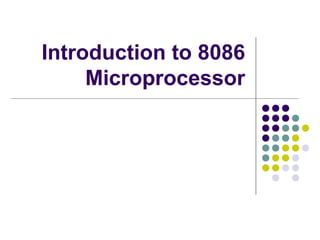The document provides an overview of the architecture of the 8086 microprocessor. It describes that the 8086 CPU logic is partitioned into two units: the Execution Unit (EU) and the Bus Interface Unit (BIU). The EU contains the ALU, registers, instruction decoder and control unit to execute instructions, while the BIU handles fetching instructions and data from memory. The document outlines the components of each unit and their roles in processing instructions.
























































